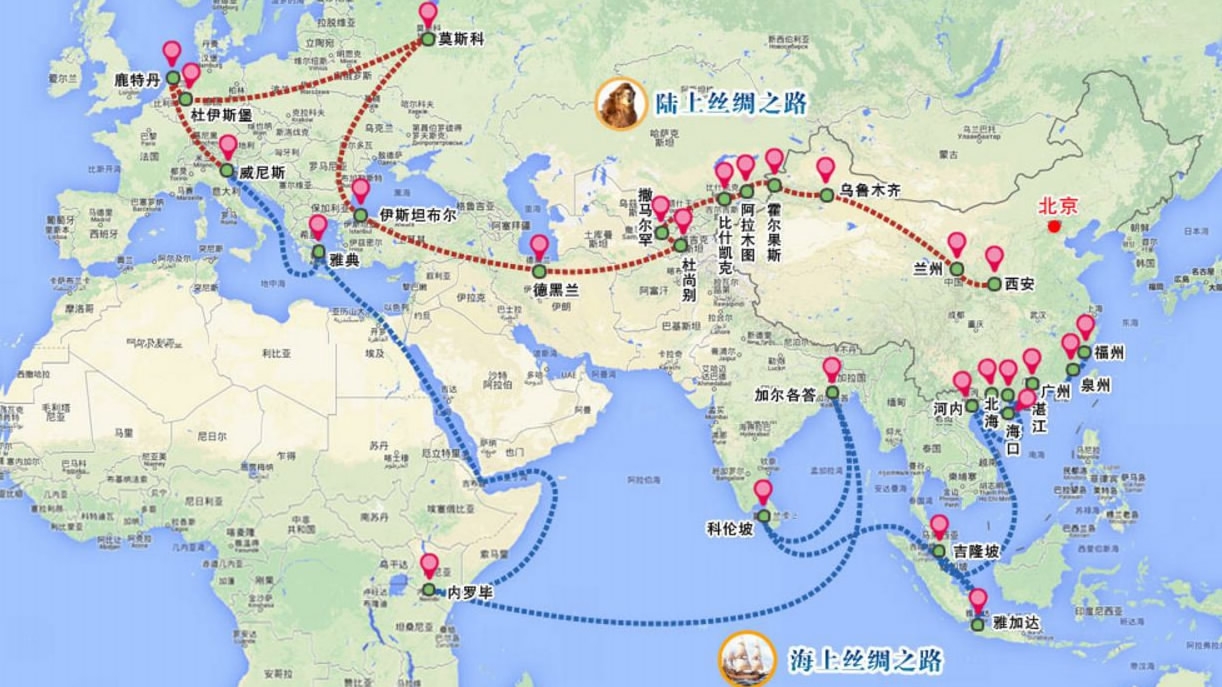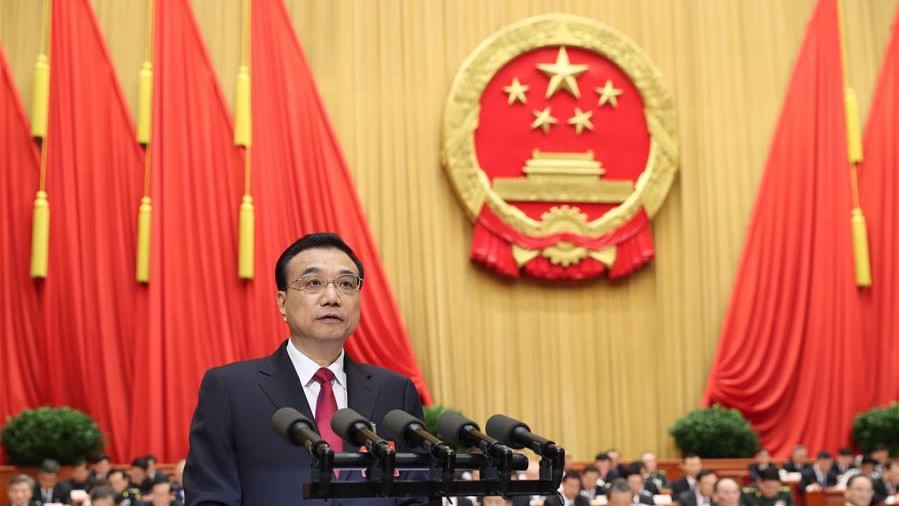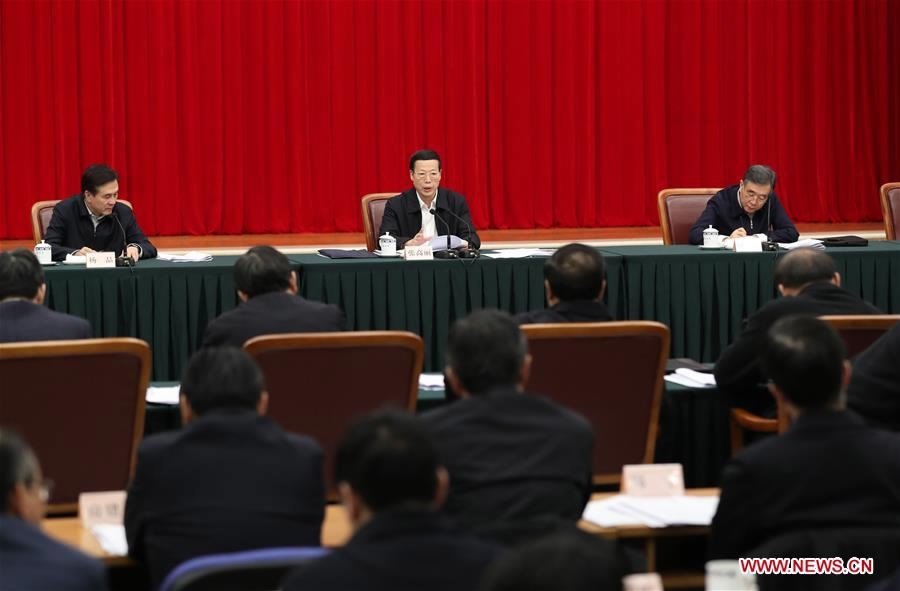
Politics
11:25, 05-Mar-2017
Views on Two Sessions: Belt and Road Initiative in new globalization
Updated
10:57, 28-Jun-2018

Guest commentary by Wang Yiwei
Parag Khana, an American strategist, being encouraged by the Belt and Road Initiative, argued in his new book "Connetography" that traditional globalization which emphasizes tax reductions, can push world economic growth to 5 percent, while new globalization with the theme of mutual connectivity, will propel growth to 10-15 percent.
Chinese Minster of Commerce Gao Hucheng, also echoed such an argument in a recent press conference, saying to further China’s opening-up and development, China should accelerate implementation of its Free Trade Agreement (FTA) strategy, make comprehensive use of domestic and international markets, promote the synergies of joint construction of the Belt and Road with China's foreign partners, and gradually forge a high-standard FTA network that is based on neighboring countries, influences the Belt and Road regions and faces the whole world.
According to Chinese Premier Li Keqiang in his annual government work report this morning, China has been promoting and thoroughly implementing the construction of the Belt and Road Initiative in the past year as well as enhancing the strategic link and pragmatic cooperation with countries along the routes, actively opening China wider to the outside.

Chinese Premier Li Keqiang delivers the Report on the Work of the Government, Mar. 5, 2017 /Xinhua Photo
Chinese Premier Li Keqiang delivers the Report on the Work of the Government, Mar. 5, 2017 /Xinhua Photo
The ancient overland and maritime Silk Roads used to be the “national road” for China to reach the West. It was a bridge for exchanges among the three major civilizations of China, India, and Greece. Today, with renewed vigor, the Silk Road has become a strategic arrangement for China to open itself further. China’s trade with Belt and Road countries in 2016 exceeded 1 trillion US dollars, accounting for one-fourth of China’s total foreign trade.
In the past 10 years, the volume of trade between China and these countries grew at an average annual rate of 19 percent, 4 percentage points higher than the average growth rate of China’s overall foreign trade in the same period. And there is even more room for growth in the future.
According to the 13th Five-Year Plan (2016-2020), in the following years, China will import 10 trillion US dollars’ worth of goods, its foreign investment will exceed 500 billion US dollars, the number of outbound tourists will reach about 500 million, and China’s neighboring countries and Belt and Road countries will be the first to benefit.
The Belt and Road Initiative has gone beyond the strategy of encouraging Chinese companies to go global. It aims to take China’s various regions abroad to build new approaches for more comprehensive and in-depth interaction between China and the world, demonstrating the country’s willingness to assume greater responsibility. The “all-directional opening-up system” established by the Belt and Road Initiative will promote a new round of “all-round, multi-level, wide-ranging” opening-up, and carry out upgrading in the following four aspects, demonstrating “globalized Chinization.”
First, who to open. The construction of the Belt and Road Initiative should fully mobilize the enthusiasm of countries and Chinese cities concerned, particularly the less open and developed regions in central and western China, and combine their production advantages with the market demand of eastern China as well as other Belt and Road countries. At the same time, the initiative does not limit the “identity” of the participating members, and is also open to countries and entities. It advocates diversified management and multi-faceted communication involving the governments, enterprises and the non-governmental sector.
Second, open to whom. The Belt and Road Initiative aims at establishing an opening policy towards broader domestic and international markets. Starting from China, the Belt and Road is an economic corridor with the longest span in the world. To build the Belt and Road, China needs firstly to expand “domestic opening,” which means that provinces along the routes should participate with enthusiasm, fully perform their duties in their own economic growth, and yield concrete results in projects under their administration, so as to achieve connectivity with other regions in China. It is also important to open the country as a whole to the outside world, which means that China should develop its opening policy to reach a larger number of more diversified countries.
China’s initiative is not targeted at any country and does not exclude any country. This freedom to choose partners can be described as unprecedented. The Belt and Road Initiative covers Central Asia, Southeast Asia, South Asia, West Asia and even some parts of Europe. It connects the Asia-Pacific economic circle in the east, and the European economic circle in the west. Transcending traditional geographical boundaries, the countries and regions involved are featured by uneven levels of development, with remarkable differences in ethnicity, religion, development history, and cultural background. Moreover, the Chinese government even says that in addition to countries along the routes, all other countries and international and regional organizations’ constructive participation will be welcome, which adds to the diversity of the initiative.
Third, way of interaction. To open is to better achieve bilateral or multilateral economic interaction. From the perspective of trade, the initiative will give priority to the construction of transport and communications and other such infrastructure connecting China to other countries along the routes, improve logistics efficiency, and facilitate bilateral or multilateral trade. Improving the consumption ability of people along the lines can also tap a larger consumer market, creating a sustainable trade pattern. In terms of investment, the initiative will help raise the status of China’s manufacturing industry in the division of labor in global value chain. One important goal about the inclusive opening-up of the initiative is to constantly promote the globalization of Chinese enterprises and enable the two-way interaction with balanced “going global” and “bringing in.”
Fourth, an open mind. China, through the construction of the Belt and Road Initiative, advocates more inclusive opening-up, and more inclusive and pragmatic cooperation, leading the new trend of international cooperation. In the past, for any large-scale economic belt construction like this, the proposing country would often choose a one-way-export-based approach to ensure its own interests. As China builds the Belt and Road, it will uphold the principle of non-interference in other countries’ internal affairs, and refuse any old path that can easily lead to conflicts and confrontation, so as to maintain good relations with its neighbors, appreciate and share each other's advantages, and seek common development. The initiative emphasizes that China does not pursue unilateralism, nor will it impose its will upon others. It welcomes countries along the routes to directly express their development advantages as well as demands, supports the improvement of independent innovation for countries concerned, and advocates that efficient cooperation between countries should be achieved through frank communication. Although the Initiative was proposed by China, China will seek to ensure the rationality and feasibility of relevant projects through equal consultation with countries concerned rather than taking the lead in the construction.
From “opening eyes to see the world” to the reform and opening-up, China has always had the hope to integrate itself into the so-called world mainstream.
Nowadays, China is already one of the centers of the world, and the “world mainstream” does not need China to strive to keep in line with it. Therefore, what China should do as it walks again into the world is to address its lack of structural power.

Chinese Vice Premier Zhang Gaoli (C, back) presides over a work conference on Belt and Road development in Beijing, Feb. 10, 2017. /Xinhua photo
Chinese Vice Premier Zhang Gaoli (C, back) presides over a work conference on Belt and Road development in Beijing, Feb. 10, 2017. /Xinhua photo
In the global arena, the structural power China lacks most is the power of voice. First, China lacks the pricing power for staple commodities. Anything China wants to buy will see a price rise. China buys 80 percent of Australia’s iron ore, but China does not have any say on the price (in fact the price has increased several fold).
Second, China cannot decide on the quality standard of products. None of the emission standards for low carbon, Euro III and Euro IV are in the hands of China. It just would not do. China produces something but they do not meet their standards, which calls for reproduction. It would cause a huge waste.
Third, China lacks the rule-making power for trade and investment. It is unreasonable that China, the world’s largest trading nation, does not have any rule-making right in international trade. Only through occupying a bigger market can China’s own standard become that of the world.
Therefore, China should turn its advantage in quantity into that in quality, into structural power. For one thing, China should compete with Europe, the US and Japan by implementing “Made in China 2025,” achieving curve overtaking. For another, China should carry out mutually complementary cooperation, focusing on Belt and Road countries that need China’s capital and technology so as to realize lane-changing overtaking. Rather than passively join globalization, what China should do is to create a brand new system of globalization.
With the fading traditional globalization, the world is applauding the Belt and Road Initiative to usher in a new type inclusive globalization by guiding Chinese overall open and reform.
(Wang Yiwei is a senior research fellow at the Center for China and Globalization (CCG) and Charhar Institute, and the author of “Chinese Book of the Year 2015” - The Belt and Road Initiative: What Will China Offer the World in Its Rise. The article reflects the author’s opinion, not necessarily the view of CGTN.)
4km

SITEMAP
Copyright © 2018 CGTN. Beijing ICP prepared NO.16065310-3
Copyright © 2018 CGTN. Beijing ICP prepared NO.16065310-3